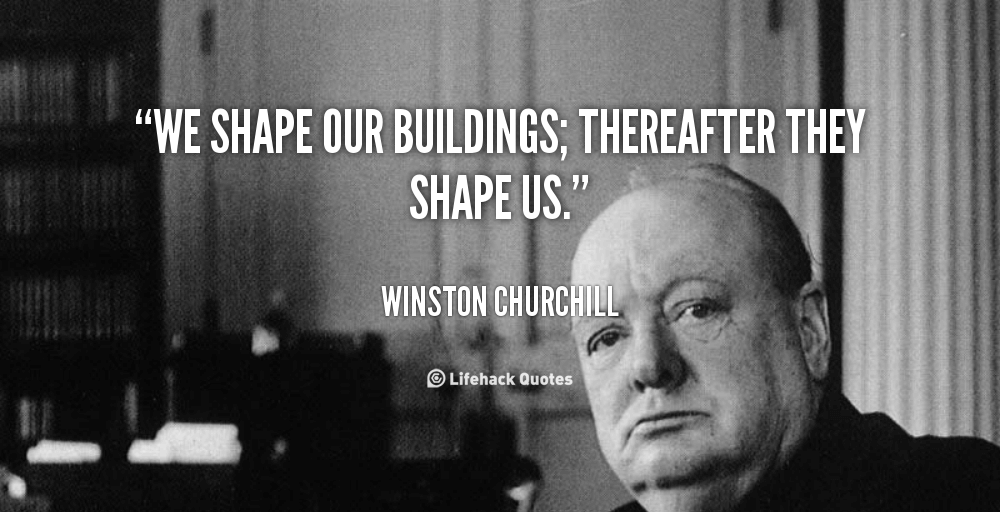We shape our buildings; thereafter they shape us… (part 1)

“We shape our buildings; thereafter they shape us…”
said Winston Churchill (1874-1965), who died 50 years ago this this week.
This oft-quoted comment on architecture resonates today as much it ever did. With the emphasis today on building (and upgrading our existing buildings) to meet standards of energy performance – in both construction and use – which will allow us to meet the UK’s binding targets for reduction of carbon emissions, the next 20 years will provide a challenge to the UK construction sector no less great than the one it faced when re-building Britain after 1945.
Leave aside the question of whether there is political will to meet our carbon reduction targets (and unfortunately it feels as though a crisis will be needed before we see really effective policy in this area). How the construction industry responds to this challenge, in terms of the processes and materials they use, will have a huge impact on everyone’s lives for decades to come.
The use of synthetic, high-embodied-carbon insulation materials – both in new build, and to insulate existing buildings – brings with it many problems. Not least of which is the extent to which using ever increasing quantities of these materials will increase rather than reduce carbon emissions. This happens partly because the insulation materials with which we are rushing “to save oil (used in heating energy)” are themselves frequently made frompetrochemicals (e.g. PIR insulation, such as Celotex, Kingspan or Bauder). You can add to this, the “embodied carbon” which was used in the process of manufacturing these highly processed materials and transporting them (and the raw materials) around the globe. Even synthetic insulations which claim to be “natural materials” have very high embodied carbon. Ever stopped to think about the actual process involved in turning rocks into ‘Rockwool’ insulation?
Still more carbon is embodied due to the fact that these materials are not generally recyclable at end of life, meaning that extra resources are used every time a building is insulated. Further carbon emissions, extra financial cost and increased environmental risks are brought by the fact that these materials are mostly classed as hazardous waste and need specialist disposal. At the very least they are contributing to unsustainable land fill at the end of their life.
Research indicates that the carbon saving we get (from using these insulations to improve the thermal performance of our homes) will take 70 years to “cancel out” the extra carbon we’ve emitted by manufacturing and transporting them. Frankly, we don’t need a carbon saving in 70 years – we need it yesterday!
Unfortunately the bad news doesn’t stop there. Synthetic insulations are full of various unpleasant chemical compounds which are increasingly (despite the best efforts of the powerful chemical industry lobby) being classified as carcinogens and linked to a range of health problems, from cancer through allergies to respiratory disease.
Synthetic insulations also have very poor, or non-existent, “breathability”; they are not permeable to water vapour, and therefore they struggle to deal with moisture – both inside the home, and within the fabric of our buildings. Moisture trapped in the walls of our building builds up; causing damp, potentially damaging the building’s fabric over time and reducing the overall thermal performance of the structure (Even more carbon emissions… doh!). Moisture trapped inside the home condenses on surfaces – ceilings, windows, walls – providing the ideal surface for the growth of harmful mould, and other bacteria and viruses which in turn represent further serious health risks for the building’s occupants. Because the walls are ‘sealed’ with synthetic insulation, the only way of solving this situation is to install expensive, powered mechanical heat recovery ventilation systems (Oh look! Some more carbon emissions… getting the picture yet?)
Look out for Part 2 of this blog article to see what hope natural materials can offer us to counteract the rather miserable picture I just painted above…
Sign up for our blog to make sure you don’t miss it!
 UK Hempcrete
UK Hempcrete